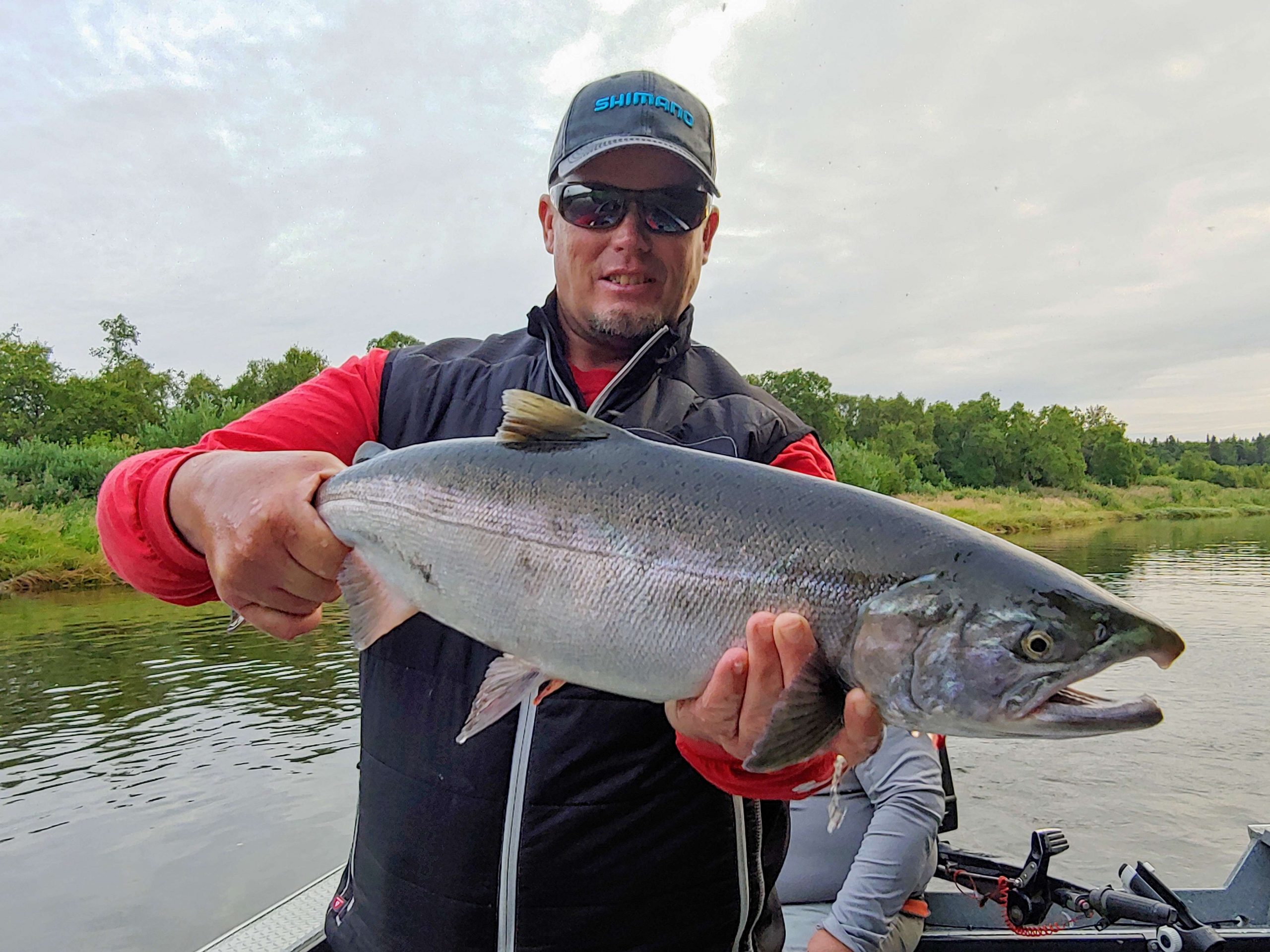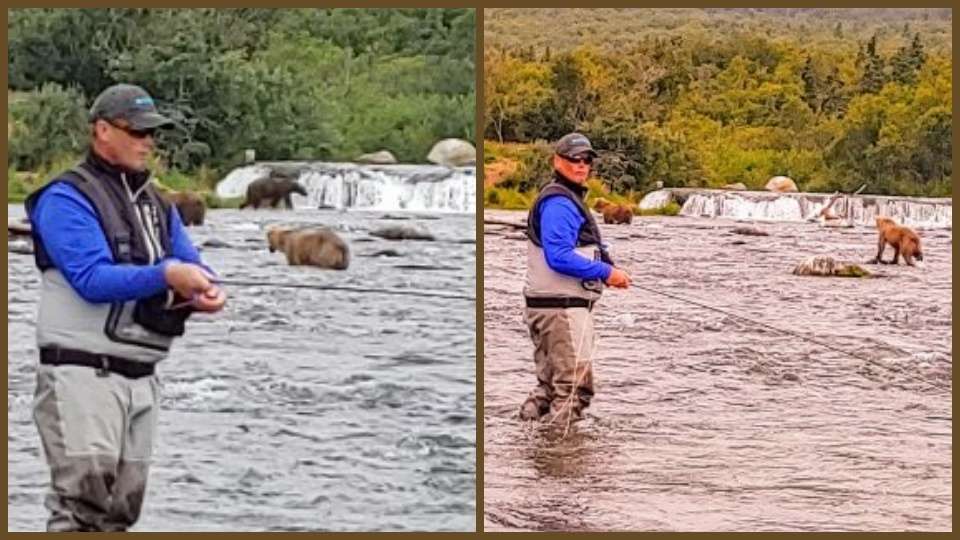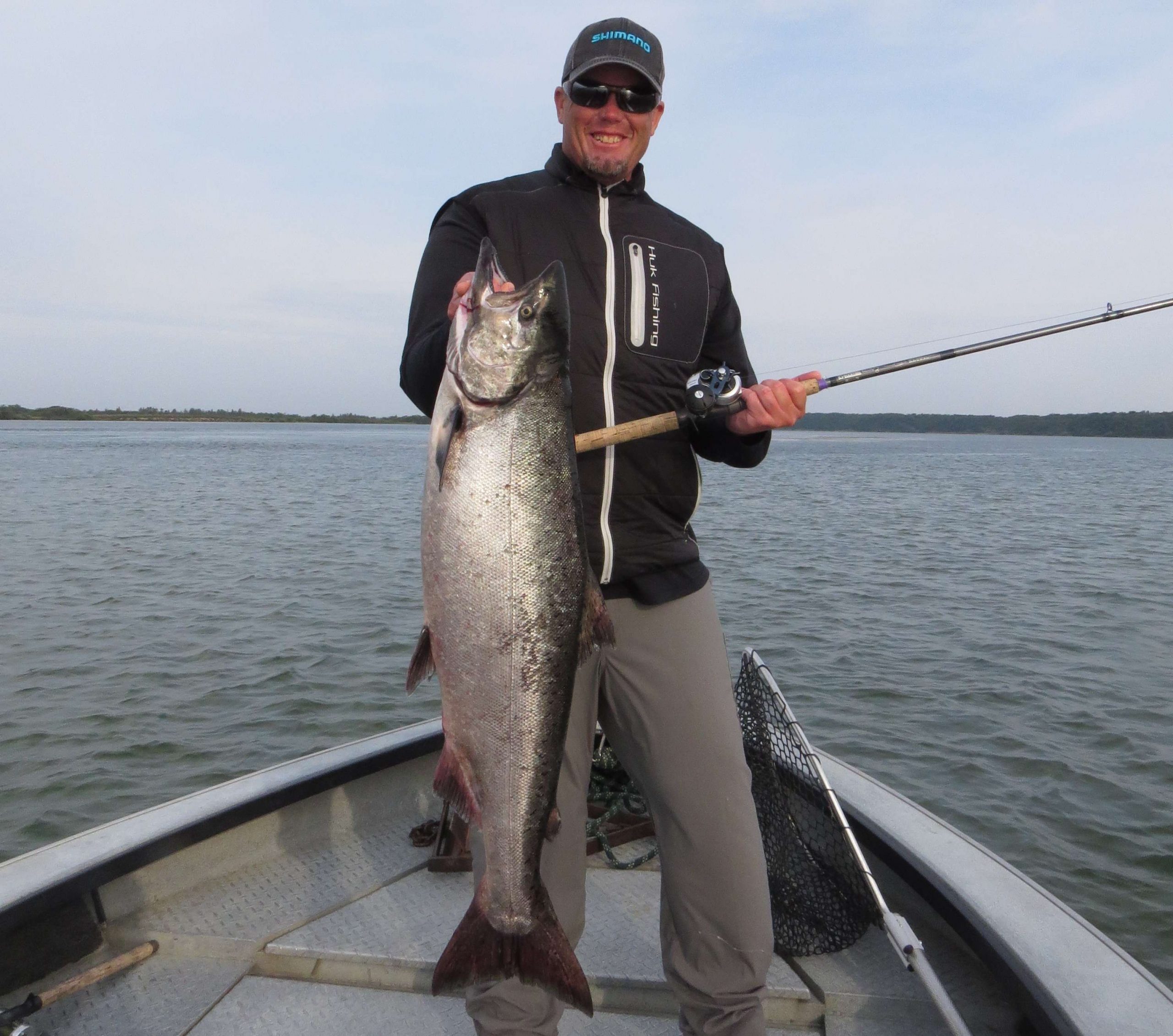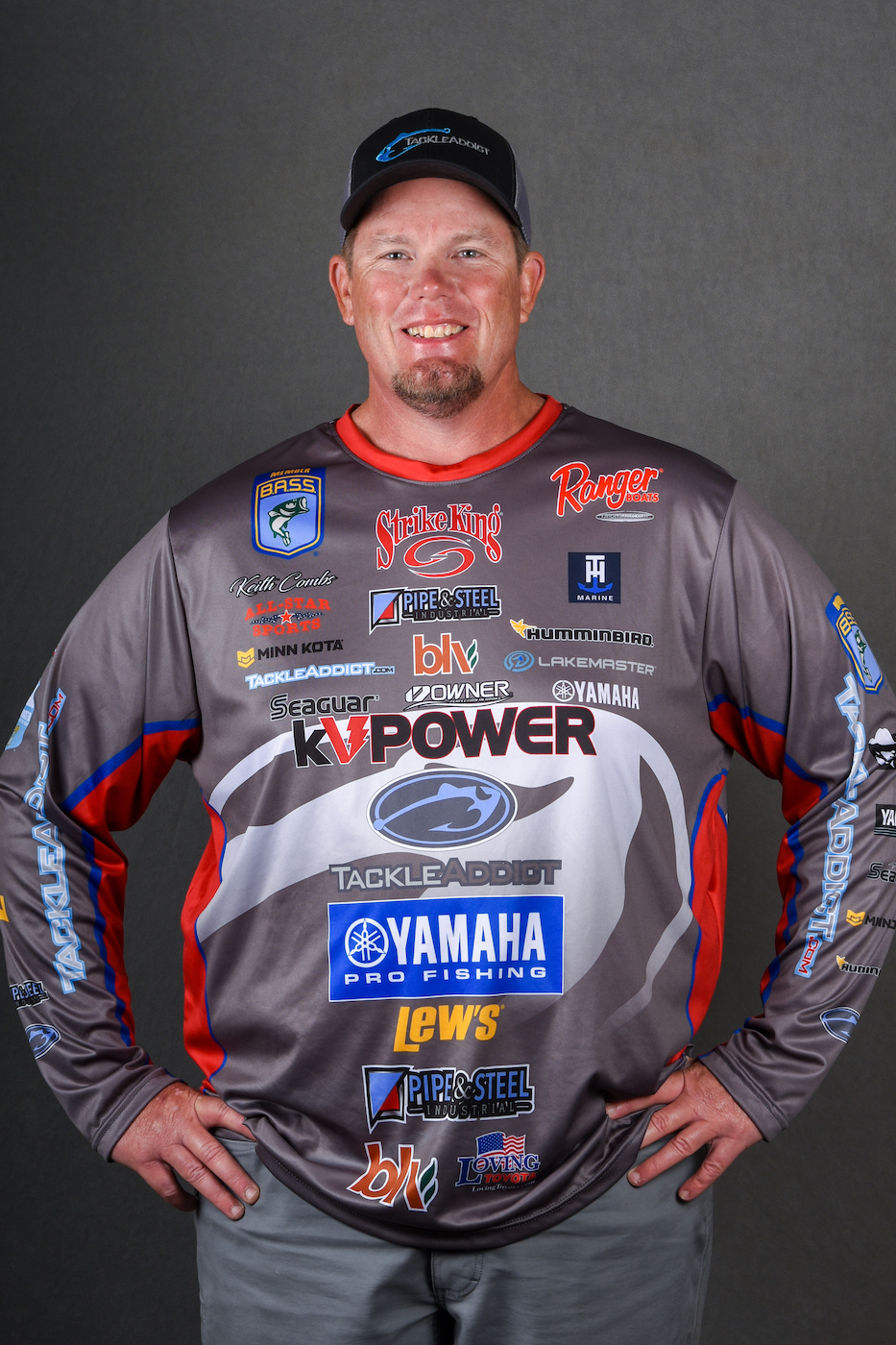
After completing our overnight saltwater trip out of Seward, Pete Robbins and I threw our fish slime-covered clothing in trash bags and headed back to Anchorage.
Editor’s note: Read part 1.
We had to catch the one-hour flight to the big town of King Salmon, an area with no stoplights and a wintertime population of less than 400. That number swells in the summertime because the area hosts multiple canneries, and many commercial fishing boats ply the local waters of the Bristol Bay ecosystem, home to some of the largest salmon runs in the world, including nearly half of the world’s wild sockeye harvest.
We had been invited to stay at Bear Trail Lodge, a luxury resort on the banks of the Naknek River, which offers guests flyouts to approximately 50 additional nearby fisheries. You can chase all five species of salmon, plus grayling, Dolly Vardens and some of the meanest rainbow trout on earth. We ended up catching all of those species, but I’m getting ahead of myself here.
When we arrived in the afternoon, our hosts took us to for a quick tour of the towns of King Salmon and Naknek. We stopped in a local bar to talk to some of the commercial fishermen and then we went to the grocery store. Everything needs to be brought via barge, so the prices were insane – $12.99 for a 12-pack of Coke, $12.29 for a gallon of ice cream, $16.99 for a block of cheddar cheese. There are no new car dealerships in driving range, so after you buy a Toyota Tundra in Anchorage, you need to spend another $3,000 to get it shipped home.
We returned to the lodge in time for appetizers, drinks and fish stories – the real reason we’d traveled so far. The next day was to be the last day of king salmon season, and while we listened to everyone talking about that day’s victories, our guide Reuben Hastings warned us that the kings had been a little slow. This was our only chance to catch them, though, so we wanted to commit at least half a day.
Well, Reuben might have a future on the Bassmaster Elite Series, because apparently he can sandbag with the best of them. Despite his warnings, the kings were firing first thing. We caught four, including three really big ones, in just a few hours with crankbaits on a main river flat. At that point we decided that we’d checked that box off our lists, and he took us into a nearby tributary where we absolutely crushed the chum salmon, along with a couple of rainbow trout and a pink salmon. The pinks only run in even-numbered years, but apparently that one didn’t get the message.
Reuben is an Alaska native and came to Bear Trail Lodge through the Bristol Bay Fly Fishing and Guide Academy, a program that teaches not only guiding skills but also life skills. Now he’s an officer of his native corporation. Other than raising her daughter Rylie (also an academy grad), lodge owner Nanci Morris Lyon said that the academy is one of her greatest achievements.
By the end of the day, I was comfortable enough with Reuben to ask him about my greatest Alaska fear – bears. We were going fishing around them the next morning, and I was pretty concerned, to say the least. He tried to talk me off the ledge, but that evening after dinner when head guide Heidi Wild told us we were going to Brooks Falls in Katmai National Park, I was pretty freaked out. If you’ve ever seen the iconic photos of bears swatting salmon, they were likely taken at Brooks, and we’d be fishing just below them in an area the bears had to cross to get there. I didn’t sleep well.
The next morning after breakfast I experienced my first float plane ride – it was amazing to see those huge expanses of unspoiled land from above. As we started our descent someone tapped me on the shoulder and pointed to the beach, where a brown bear walked casually right where we were supposed to get off. On the other side there was a mother with two cubs. We landed and as we disembarked a Park Ranger told us to hurry up because there was a family of bears approaching. They moved us into a small building where we had to undergo 20 minutes of “bear training,” teaching us how to behave. I sat in the front row and listened attentively.
Then it was time to go fishing. Our guide led us down a groomed trail and then suddenly peeled off to walk down an actual bear trail to the river. We entered the water to cast, and I looked upstream and saw about 10 bears a mile away. I was nervous, but it didn’t take long for the fisherman in me to kick in. I got a bite on my first cast and that settled me down. Even though it was a fly rod, I’m calmer when I have a fishing rod in my hand.

It wasn’t just bears that joined us on the Brooks River. A wolf walked the banks. Apparently that’s pretty rare, but we lucked out. Like the bears, he was just doing his own thing. Nevertheless it’s pretty wild when those big beasts come close. You’re supposed to back off when bears advance within 50 yards, and that’s what we did, but even though they were laser-focused on the salmon it was still unnerving. I don’t think I went more than three casts all day without getting a bite from a strong sockeye salmon, but there were periods when I didn’t get to cast much because of bear activity.
It was my first time with a fly rod and thanks to excellent instruction from our guide Ryan I was a serviceable caster pretty quickly. After 35 years of bass fishing, I’m pretty set in my ways, but it was invigorating to have to develop a new skill set.
The next day we flew out for another fly fishing adventure on Contact Creek, landing the float plane on the appropriately-named Postage Stamp Lake. It was one bite after another after another. We caught gorgeous Dolly Varden trout, mean-spirited rainbows and grayling with “sails” for dorsal fins. It was amazing how many fish could live in a little run the length of my Ranger bass boat. Our two young female guides had the fishing wisdom of Rick Clunn and carried heavy packs of gear and lunch while Pete and I fished unencumbered. We had a few more close bear encounters, but by that time I was able to relax and enjoy their antics.
On the final day we only had a half day to fish so we stayed in the Naknek and chased silver salmon with conventional gear with Nanci’s husband Heath. We caught several of the dime-bright brawlers, including a few big ones, and I was glad that my Shimano reels have silky-smooth drags, because they every time we thought a fish was ready for the net it would go on another blistering run.
Now that I’ve been home for a little while I’m starting to realize what an incredible experience the whole thing was. I’ve been to some incredible lodges like Grosse Savanne, and this experience was every bit as good. What made it different was that I’m normally so bass-focused. I go to Venice for redfish once a year, and occasionally I’ll fish for crappies, but it was good to spread my wings and go after something totally new. On the first day, chasing kings, I was wishing I had a jerkbait, because that’s what I’d use for bass under those conditions. When we moved into the creek for chums, I wanted to parallel the grass lines with a swim jig. I couldn’t disconnect at first.
Eventually I learned to enjoy the novelty of it all. At Brooks, I’m sure that my casts were not pretty. I’m used to firing them out hard and this required finesse. Some of my fellow fishermen might’ve looked at me dismissively and said, “That guy’s probably from Texas.” But you know what? I got the job done. I’m pretty sure I caught as many fish as anyone in the park that day, and I know that I had more fun doing it.
As an angler, it’s good to get out of your comfort zone once in a while to remember what it’s like to figure out the little things that can make a difference. Sometimes you can accomplish that in your own backyard, but traveling to someplace altogether new – especially someplace as magical as Alaska – has its own advantages. I will never forget my time at Bear Trail Lodge, and I hope to get back sometime after next year’s ice goes out to put my newfound skills to work. Check them out if you get a chance. You won’t regret expanding your horizons.


